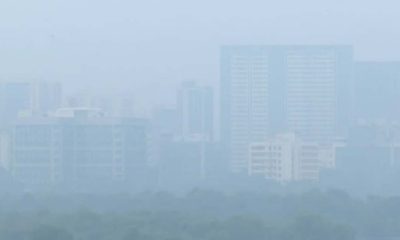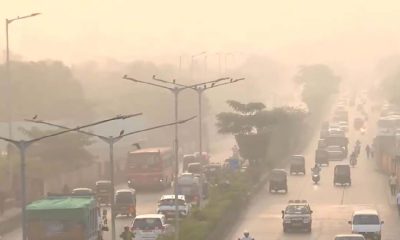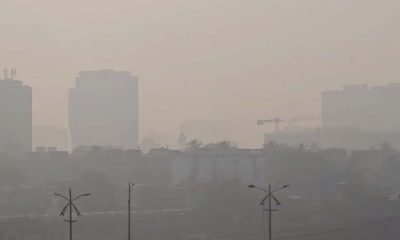National News
Delhi CM Atishi, Sisodia cast their votes for Delhi Assembly polls
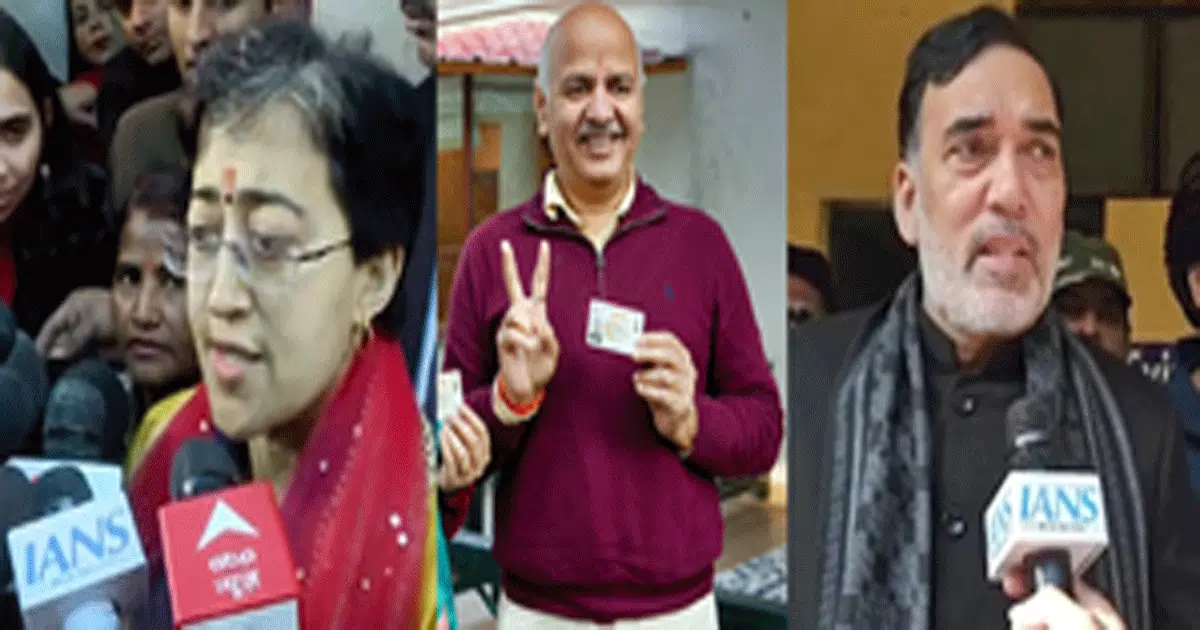
New Delhi, Feb 5: Delhi Chief Minister Atishi and former Deputy Chief Minister Manish Sisodia cast their votes on Wednesday as polling continues across all 70 Assembly seats in the national Capital.
Before heading to the polling booth, AAP candidate from the Kalkaji Assembly constituency, Atishi, visited the Kalkaji Temple to offer prayers. Speaking to reporters, she accused the BJP of violating the election code of conduct and claimed that Delhi Police was supporting them.
“It is clear that the hooliganism happening during the elections is being carried out jointly by the BJP and Delhi Police… This is a battle of truth versus lies, and I truly believe the people of Delhi will stand with the truth, work, and defeat hooliganism,” CM Atishi said.
Meanwhile, the AAP’s Jangpura candidate Manish Sisodia, along with his wife Seema Sisodia, cast his vote at Lady Irwin Senior Secondary School in New Delhi. Before voting, he inspected multiple polling stations in the area.
“Siksha ki kranti jeetegi (The education revolution will win),” Sisodia said, urging Delhiites to vote for a better Delhi with improved education, electricity, water, and pollution control.
Delhi Environment Minister and AAP candidate from Babarpur, Gopal Rai, also cast his vote.
Speaking to Media, he expressed confidence of a positive outcome. “The public is set to form a government that works,” he said.
Meanwhile, voting, which began early in the morning, will continue until 6 p.m. Authorities have heightened security at nearly 3,000 sensitive polling booths, deploying 220 paramilitary force companies, 35,626 Delhi Police personnel, and 19,000 Home Guards. Drone surveillance and Quick Reaction Teams have been stationed to ensure law and order.
The elections will determine whether the Aam Aadmi Party (AAP) retains its stronghold, the Bharatiya Janata Party (BJP) stages a comeback, or the Congress re-emerges as a contender. The results will be declared on February 8.
Campaigning ended on Monday at 6 p.m. after an intense electoral battle. In the 2020 Delhi Assembly elections, AAP secured a landslide victory with 62 out of 70 seats, while BJP won eight. The Congress, for the second consecutive election, failed to secure a single seat.
As voting progresses, all eyes remain on voter turnout and the final verdict.
Business
India in talks with 50 nations on fair trade deals: Piyush Goyal
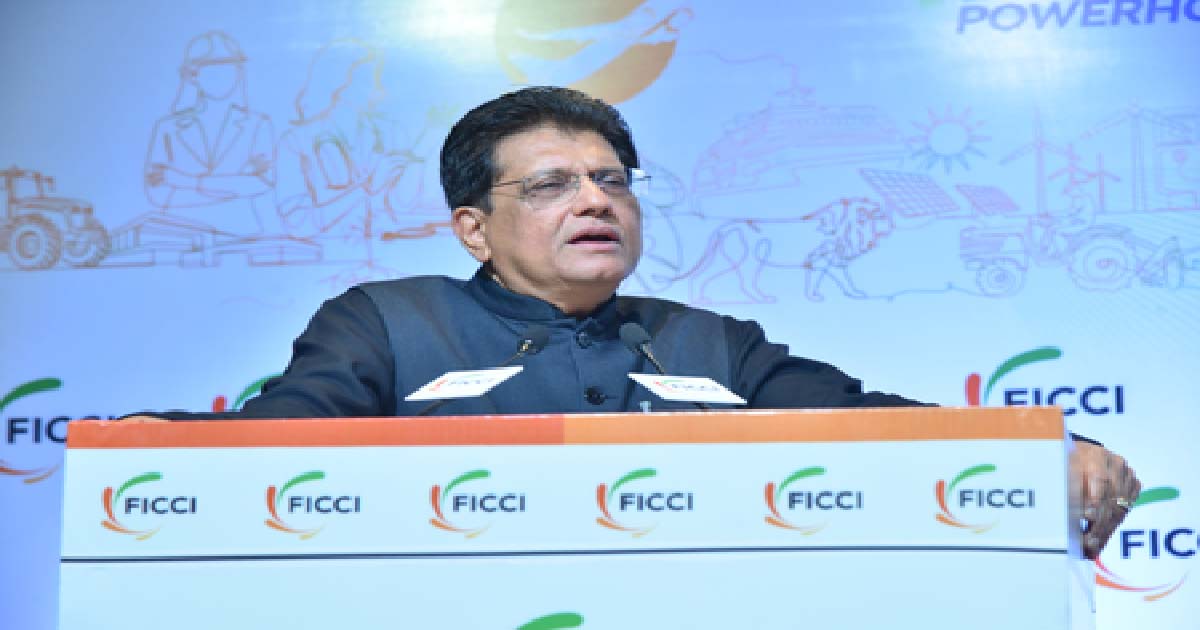
New Delhi, Nov 28: Commerce and Industry Minister Piyush Goyal said on Friday that India is currently engaged in discussions on fair and balanced trade deals with 14 countries or groups representing nearly 50 nations, including the United States, the European Union, GCC countries, New Zealand, Israel, Eurasia, Canada, South Africa and the Mercosur group.
Addressing the annual general meeting of the Federation of Indian Chambers of Commerce and Industry (FICCI) here, the minister underlined that balanced and equitable trade agreements have already been concluded with Australia, the UAE, Mauritius, the United Kingdom and the four-nation EFTA bloc.
Highlighting broader global developments, the minister said that recent geopolitical and economic challenges have underscored the need for trusted partners and resilient supply chains. He stated that India’s expanding network of free trade agreements (FTAs) and economic partnerships is aimed at building long-term cooperation anchored in fairness, transparency and mutual benefit.
Goyal said that the idea of self-reliance is central in India’s civilisational ethos, recalling references from the Bhagavad Gita and Mahatma Gandhi’s emphasis on Swadeshi. He said that self-reliance has historically guided India’s progress and continues to remain central to the country’s economic strategy. He added that this vision has been strengthened through the focus on Atmanirbhar Bharat under the leadership of Prime Minister Narendra Modi.
Referring to the recent EFTA agreement, the minister noted that the bloc has committed to invest $100 billion in India across innovation and precision manufacturing. He underscored India’s cost competitiveness in research and innovation, stating that high-quality innovation undertaken in India can be achieved at a fraction of the cost compared to Europe or the United States.
The Minister highlighted India’s strengths in innovation and technology, supported by a young demographic, increasing digital adoption and a growing talent pool. He said that India’s large number of STEM graduates and widespread internet access create strong potential in emerging areas such as applied artificial intelligence, automation, robotics and deep-tech innovation.
He noted that the recently announced $12 billion Research, Development and Innovation (RDI) fund, along with ongoing support to startups and deep-tech industries, will further accelerate India’s innovation ecosystem.
Goyal emphasised the importance of strengthening skilling to prepare India’s youth for future opportunities. He said that unlike many developed economies facing ageing populations, India’s youthful demographic is quick to adapt to emerging technologies and has already demonstrated high engagement with digital platforms. He added that this readiness positions India to play a major role in the global technology landscape.
The minister outlined India’s strengths through the ‘PESTLE’ framework, noting that Prime Minister Modi has consistently advanced the vision of self-reliance across sectors. He said that politically, a stable and predictable government committed to “Minimum Government, Maximum Governance” has enhanced investor confidence. In the economic domain, initiatives such as the National Manufacturing Mission and the Rs 25,000 crore Export Promotion Mission are supporting India’s rise towards becoming the world’s third-largest economy.
On the social front, he highlighted that the four Labour Codes ensure better wages and protections, while the Antyodaya approach has supported the fulfilment of basic needs.
In the technology sector, Goyal pointed to initiatives aimed at reducing external dependence, including the Semiconductor Mission (Rs 76,000 crore) and the Rs 7,000 crore programme for permanent magnet production, which strengthen domestic manufacturing and supply chain security. In the legal domain, he referred to ongoing reforms, including progress toward Jan Vishwas 3.0, designed to enhance ease of doing business.
He further noted that the ‘Atomic Energy Bill 2025’ marks a historic shift by opening up the nuclear sector to strengthen energy sovereignty.
The Minister urged FICCI to adopt a mission-driven approach to promoting innovation, deepening research and development, strengthening industry-academia linkages and supporting India’s journey towards becoming a developed nation by 2047.
Crime
Delhi: Crime Branch arrests habitual offender with 68 cases, cracks snatching incident involving NRI woman
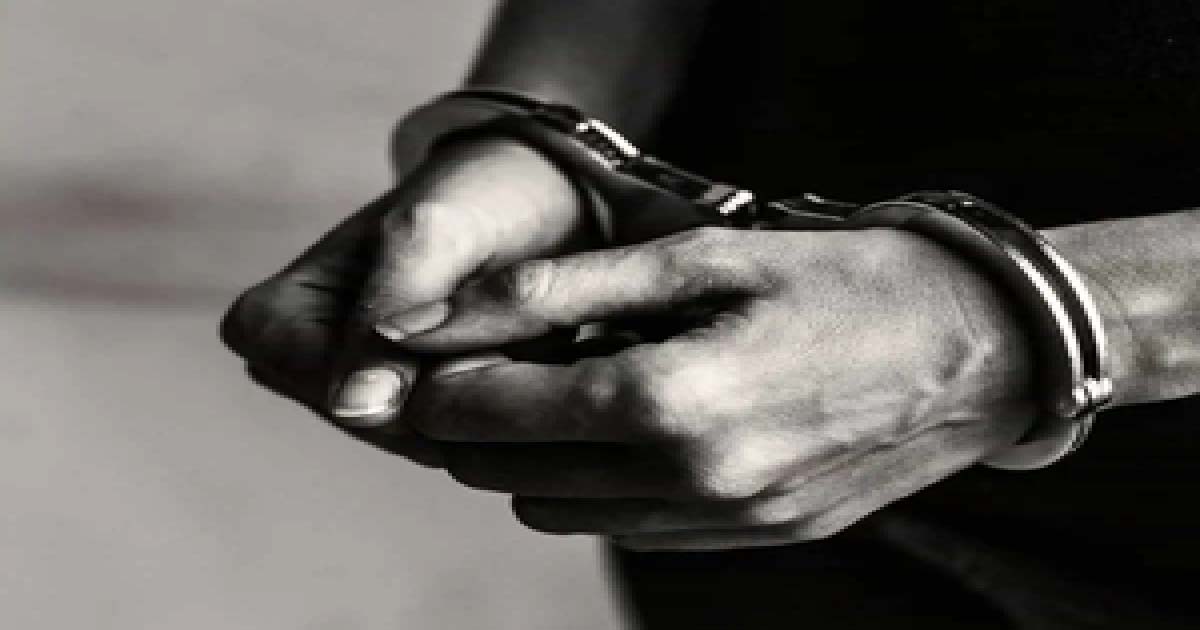
New Delhi, Nov 28: The Delhi Police Crime Branch has arrested a notorious repeat offender with 68 criminal involvements, securing a major breakthrough in a high-profile snatching case targeting an NRI woman earlier this year, the Delhi Police said on Friday.
The accused, identified as Tarun alias Gadam Wala, a resident of Aman Vihar, had been on the run for over seven months and was declared an absconder by a city court.
According to officials, the arrest was made by the Western Range-I team of the Crime Branch following specific inputs received on November 24.
Tarun, a listed Bad Character (BC) of PS Aman Vihar, had managed to evade multiple police teams after being implicated in a snatching incident involving a woman visiting Delhi from California.
The case, registered under FIR No. 508/2025 at Karol Bagh police station, pertains to an incident on April 5 when the complainant was returning after withdrawing cash from a PNB ATM on Padam Singh Road.
“On April 5, 2025 at about 11:50 a.m., after withdrawing money from PNB ATM, Padam Singh Road, two unidentified boys on a black scooty snatched her gold chain (approx. 15 grams) and fled towards Ganga Mandir Marg. She raised an alarm, but they escaped,” the police said in iots press note.
“During investigation, co-accused Rahul (driver) was arrested and recovery of the scooty and gold chain were affected. However, his associate Tarun alias Gadam Wala had been absconding since the incident,” it said.
A team led by Inspector Mahipal and supervised by ACP Satendra Mohan, acting on secret information and technical surveillance, tracked Tarun to Aman Vihar and apprehended him without incident.
During interrogation, police said, Tarun confessed to being the pillion rider who snatched the chain.
He revealed that Rahul had stolen the scooty used in the crime and that he received Rs 6,000 as his share after the chain was sold. He also told investigators that he is a drug user and committed the crime to fund his addiction. Tarun had been released from jail in January 2025 after serving time in another snatching case.
Police records show the accused has been involved in 68 cases related to snatching, theft, burglary, robbery, and Arms Act violations.
“His capture marks a major success in ongoing efforts to curb repeat offenders and strengthen public safety,” said DCP Harsh Indora.
National News
Mumbai Local Train Update: Western Railway Services Disrupted Due To Trespassing Incident Near Mahim; Commuters Allege 30-40 Minutes Delay
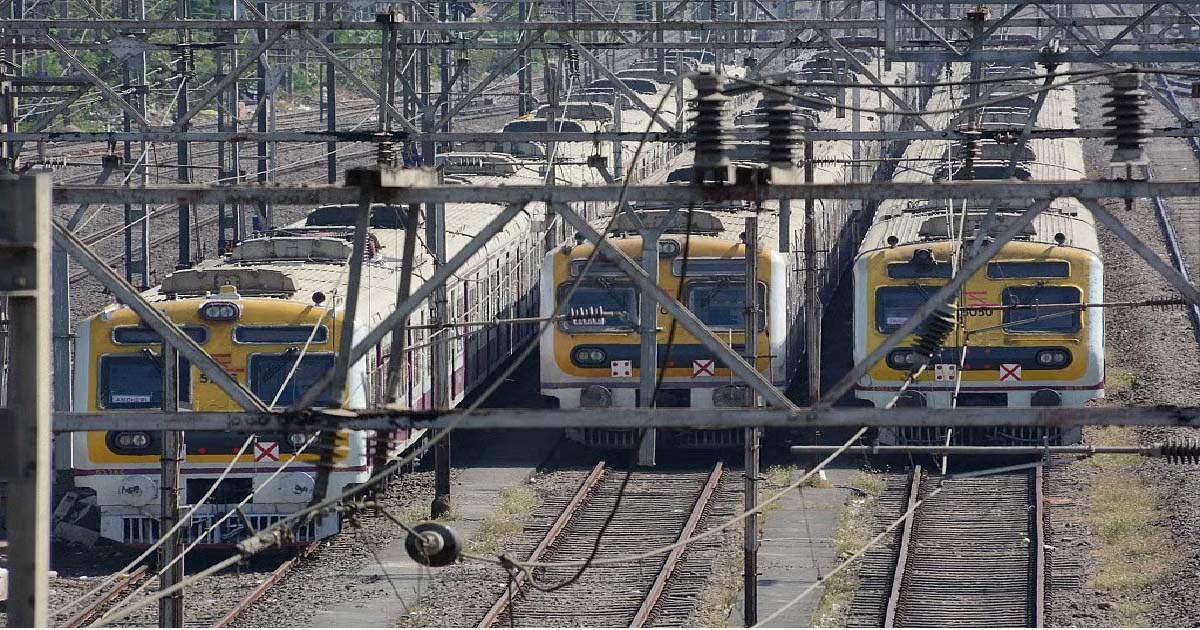
Mumbai: Suburban Train services on Western line were disrupted for nearly half an hour on Friday after a trespassing incident was reported near Mahim station around 10:35 am.
According to officials, the incident occurred on the Up fast line. Although the case was confined to a single track, its cascading effect slowed operations on adjoining lines as well. The affected train was detained for about 25 minutes, leading to several other services getting stranded along the route.
Railway personnel cleared the track by around 11:00 am, after which services on the Up fast line between Bandra and Mahim were gradually restored.
Western Railway reiterated that trespassing is a punishable offence under Section 147 of the Railways Act, 1989, attracting a fine of up to Rs 1,000, imprisonment of up to six months, or both. In most cases, a minimum fine of Rs 500 is imposed.
Officials have urged commuters to avoid trespassing under any circumstances and to use foot overbridges, lifts, and designated crossing facilities for their safety.
The incident comes just a few days after Maharashtra Chief Minister Devendra Fadnavis unveiled a major upgrade for Mumbai’s suburban railway network, announcing that new fully air-conditioned local trains with automatic doors will soon be introduced, without any increase in second-class ticket fares.
Speaking at the IIMUN Youth Connect event, Fadnavis said Mumbai’s local trains, which carry nearly 90 lakh passengers every day, remain the city’s lifeline. He acknowledged ongoing concerns around overcrowding and safety, stating that the upcoming fleet aims to provide a safer, more comfortable travel experience.
According to the Chief Minister, the railways will procure 268 new AC local trains that will gradually replace older, doorless rakes. The upgraded trains will resemble metro systems in design and functionality, with modern interiors and automated doors to minimise the risk of commuters falling from moving trains.
The announcement comes in the backdrop of heightened public concern after a fatal incident in Mumbra, where several passengers fell from an overcrowded non-AC coach. Fadnavis said the introduction of automatic doors is part of a broader push toward enhanced safety, adding that even new non-AC local trains are being designed with self-closing doors.
-

 Crime3 years ago
Crime3 years agoClass 10 student jumps to death in Jaipur
-

 Maharashtra1 year ago
Maharashtra1 year agoMumbai Local Train Update: Central Railway’s New Timetable Comes Into Effect; Check Full List Of Revised Timings & Stations
-

 Maharashtra1 year ago
Maharashtra1 year agoMumbai To Go Toll-Free Tonight! Maharashtra Govt Announces Complete Toll Waiver For Light Motor Vehicles At All 5 Entry Points Of City
-

 Maharashtra1 year ago
Maharashtra1 year agoFalse photo of Imtiaz Jaleel’s rally, exposing the fooling conspiracy
-

 National News1 year ago
National News1 year agoMinistry of Railways rolls out Special Drive 4.0 with focus on digitisation, cleanliness, inclusiveness and grievance redressal
-

 Maharashtra1 year ago
Maharashtra1 year agoMaharashtra Elections 2024: Mumbai Metro & BEST Services Extended Till Midnight On Voting Day
-

 National News1 year ago
National News1 year agoJ&K: 4 Jawans Killed, 28 Injured After Bus Carrying BSF Personnel For Poll Duty Falls Into Gorge In Budgam; Terrifying Visuals Surface
-

 Crime1 year ago
Crime1 year agoBaba Siddique Murder: Mumbai Police Unable To Get Lawrence Bishnoi Custody Due To Home Ministry Order, Says Report



